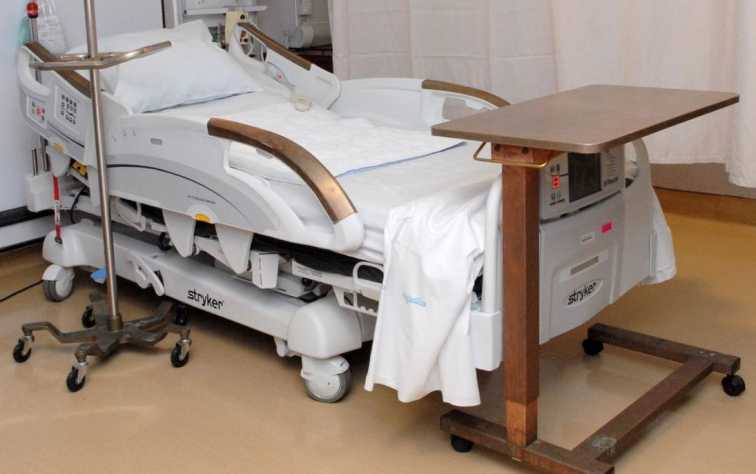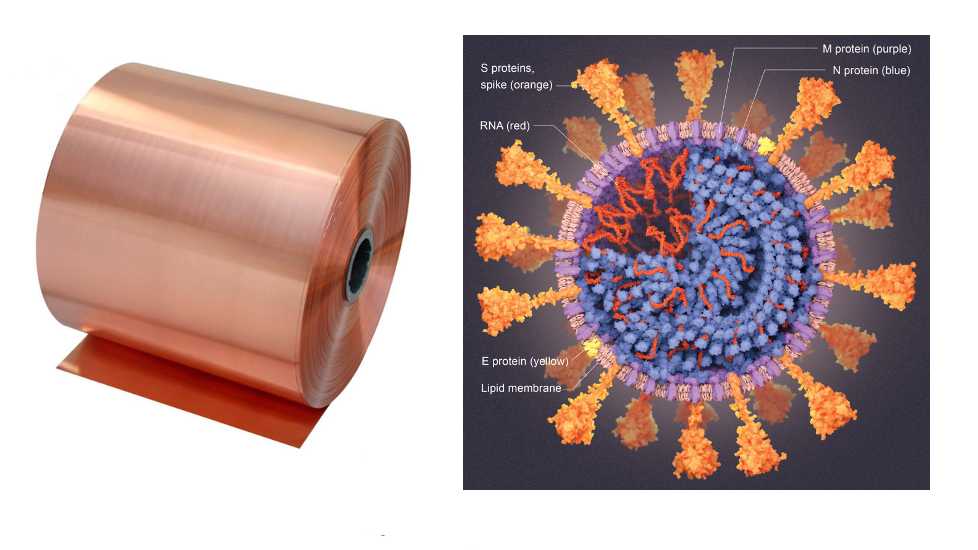
Researchers have reported that the novel coronavirus COVID-19 is able to survive for days on glass and stainless steel etc but dies within hours having come into contact with copper.
Professor Bill Keevil is the Professor of Environmental Healthcare within School of Biological Sciences at the University of Southampton and he has studied the antimicrobial effects of copper for more than twenty years. At the outset he began with the bacteria which causes Legionnaire's Disease and then antibiotic resistant infections such as Methicillin-resistant Staphylococcus aureus (MRSA). He also tested viruses which have caused global health scares such as Middle East Respiratory Syndrome (MERS) and Swine Flu (H1N1) and in each case, copper contact killed the pathogens within a very short period.

In 2015, Professor Keevil focused on Coronavirus 229E, a relative of the COVID-19 virus which causes the common cold and pneumonia. Copper killed the virus within minutes whereas it remained infectious for up to five days on surfaces such as stainless steel or glass.
Professor Keevil commented “One of the ironies is, people install stainless steel because it seems clean and in a way, it is,” while noting the material’s ubiquity in public places. “But then the argument is how often do you clean? We don’t clean often enough.” Copper, by contrast, disinfects merely by being there.
Professor Keevil’s work is a modern confirmation of an ancient remedy. For thousands of years and long before anyone knew about germs or viruses, people have been aware of the disinfecting power of copper.
One of the first recorded uses of copper as an infection-killing agent comes from Smith's Papyrus, the oldest-known medical document. The information therein has been ascribed to an Egyptian doctor who lived in 1700 B.C. and is based on information that dates as far back as 3200 B.C.
As long ago as 1600 B.C., the Chinese used copper coins as a medication for heart and stomach pain and bladder diseases etc. The sea-faring Phoenicians inserted shavings from their bronze swords into battle wounds in order to prevent infection. For thousands of years, women have known that their children didn't get diarrhoea as frequently when they drank from copper vessels.
Copper’s anti-microbial properties persist. Professor Keevil’s team have examined old railings at New York City’s Grand Central Terminal. "The copper has maintained its properties just like it did the day it was put in over a hundred years ago.
What ancients peoples knew, modern scientists and organisations such as the Environmental Protection Agency have confirmed in as much as they have registered about four hundred copper surfaces as being antimicrobial.
Heavy metals including gold and silver are also antibacterial, but copper’s specific atomic makeup gives it additional killing power, Professor Keevil said. Copper has a free electron in its outer orbital shell of electrons which easily takes part in oxidation-reduction reactions (which also makes the metal a good conductor). As a result, it becomes a “molecular oxygen grenade.” Silver and gold don’t have the free electron, so they are less reactive.

When a microbe lands on copper, ions blast the pathogen like an onslaught of missiles, preventing cell respiration and punching holes in the cell membrane or viral coating and creating free radicals that accelerate the kill, especially on dry surfaces. Most importantly, the ions seek and destroy the DNA and RNA inside a bacteria or virus, preventing the mutations which create drug-resistant superbugs.
Given the current Covid-19 pandemic, it may be appropriate to pay more urgent attention to the use of copper surfaces in our hospitals etc.
